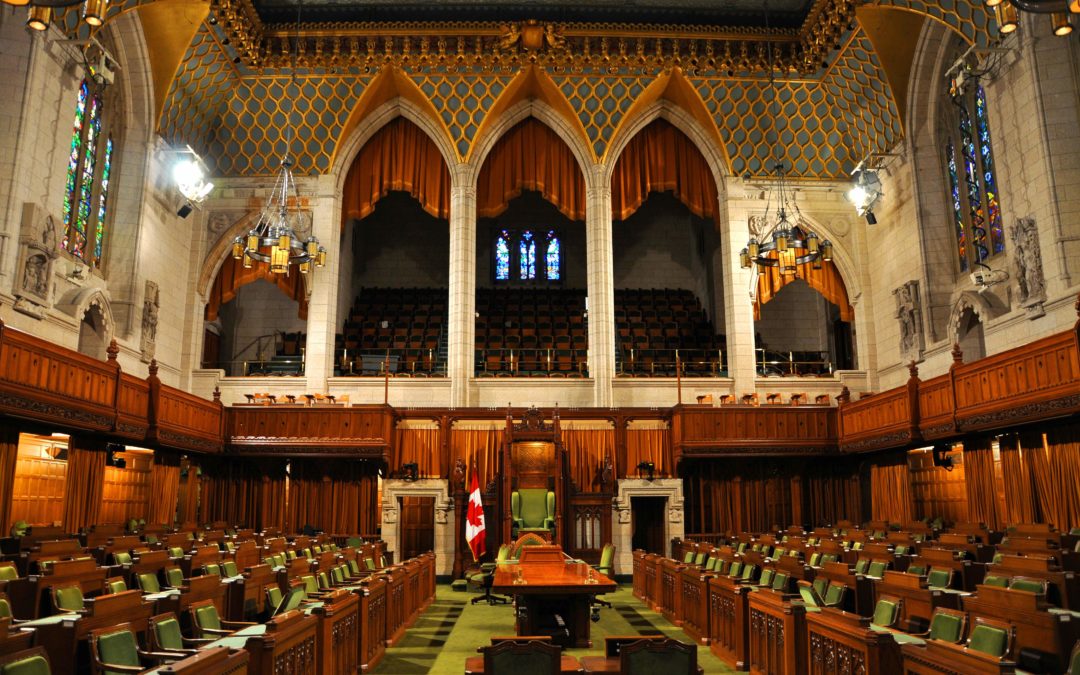 OTTAWA – With the federal election a mere 18 months away, the Trudeau Liberal government presented a well-calibrated budget that holds off on major new spending, while putting modest new initiatives in the window that will be popular with key Liberal voter blocks.
OTTAWA – With the federal election a mere 18 months away, the Trudeau Liberal government presented a well-calibrated budget that holds off on major new spending, while putting modest new initiatives in the window that will be popular with key Liberal voter blocks.
Against the backdrop of uncertainty tied to ongoing NAFTA negotiations and a soft landing in key housing markets, Finance Minister Bill Morneau is keeping some funding in reserve – should there be significant downside shocks – which has the dual benefit of preserving fiscal space for next year’s pre-election budget. With the economy benefitting from the lowest unemployment rate in 40 years, and average real GDP growth leading the G7 (3.2 per cent since Q2 2016), a good Keynesian economist would agree that now is not the time to spend. At the same time, Canada needs to maintain competitiveness relative to the US, where tax changes have sweetened the pot for businesses looking for greener pastures.
Budget Winners
Women in the Workforce
The entire budget is built upon a “Gender Results Framework” that seeks to reduce the gap in women’s workforce participation – a goal that would boost GDP by four per cent. Accordingly, the government will introduce proactive pay-equity legislation as part of the budget implementation act that would apply to federal government employers and federally regulated sectors. This legislation will set out specific implementation timelines and establish independent oversight.
The budget provides $1.2 billion over five years for a new EI Parental Sharing Benefit. This initiative will add five weeks of additional “use it or lose it” parental leave that can only be taken by the second parent. The government’s goal is to create a culture of change in workplaces with more men taking time to care for babies and to “set up a pattern of equal parenting that will last a lifetime.” A similar model has been in place in Quebec since 2006, where 80 per cent of new fathers take parental leave – compared to 12 per cent in the rest of Canada.
The government is also providing $1.4 billion over three years in financing support for women entrepreneurs through the Business Development Bank of Canada, $250 million in financing for women-led export businesses via Export Development Canada, and $105 million over five years for women-led businesses through regional economic development agencies.
Pharmacare Advocates
Perhaps the biggest surprise in the budget was telegraphed yesterday with the sudden resignation of Ontario Health Minister Eric Hoskins, who has been tapped to head up a new Advisory Council on the Implementation of National Pharmacare. The Council is set to complete its work in early 2019, just in time for the next budget and ensuing election. While the timeline is ambitious, it signals that the Liberals are planning to make pharmacare a central promise in the next campaign platform – robbing a key election plank from the NDP.
Research
Finance Minister Bill Morneau delivered on expected funding for scientific research, striking a balance between the curiosity-driven research favoured by last year’s Naylor Report and the priority-driven research favoured by previous governments. The budget will invest a historic $1.7 billion in basic scientific research over five years, $1.2 billion of which will go directly to granting councils, plus $1.3 billion in research infrastructure. The government set a new research priority by providing $572 million over five years to implement a Digital Research Infrastructure Strategy focused on big data, which is expected to benefit genomics medical research.
Building on the government’s Innovation Agenda, the budget commits $540 million over five years to “reimagine” the National Research Council and encourage collaboration between government researchers and industry. A further $700 million over five years will increase the threshold of technology commercialization projects eligible for funding under the Industrial Research Assistance Program from $1 million to $10 million.
Conservationists
The government has committed $1.3 billion over five years to conserve more land and waters, preserve biodiversity and protect species at risk, which will help to meet United Nations targets. This includes $500 million to create a new Nature Fund that will leverage $500 million in funding from other public and private sources to secure private land. The government is also earmarking $1 billion to establish a new environmental assessment framework for major projects, including a commitment to maintain “one project, one review.”
First Nations
The government continues to put its money where its mouth is with respect to reconciliation, by adding $5 billion in new investments over five years to the $11.8 billion committed in the previous two budgets. This includes $1.4 billion for First Nations Child and Family Services, $2 billion for Indigenous Skills and Employment Training, and $1.5 billion for Indigenous health care.
Combatting the Opioid Crisis
The budget invests $230 million to fight the opioid crisis, including an additional $150 million in additional emergency one-time funding to provinces and territories.
Local News
While the government has resisted calls to bail out the newspaper industry, the budget includes $50 million to be administered through independent non-governmental organizations to support local journalism in underserved communities.
Budget Losers
Tax Sheltered Investors
Minister Morneau came under fire last summer for a series of proposed changes on the taxation of incorporated small businesses, including their goal to remove preferential tax rates on investments made inside private corporations. Following the uproar, the proposal was revised so that is not applied retroactively and going forward will apply only to passive income above $50,000 with measures to protect small business and venture capital. The budget legislation will follow through on this plan to to limit the use of passive investment income, expected to affect less than the top three per cent of the wealthiest incorporated individuals. The budget will also follow through on the government’s commitment to prevent income sprinkling within a private corporation. These initiatives will save the government $3.4 billion over five years.
Financial Institutions
The budget targets banks and financial institutions who create artificial losses that can be used against other income – planning to close loopholes that could save up to $200 million annually.
Deficit Hawks
Fiscal conservatives looking for a path to balance won’t find one in budget 2018. That said, the budget projects a significant improvement to the deficit compared to last year’s document at $19.4 billion for 2017-18 fiscal year, down from the $28.5 billion projected last year. For the upcoming 2018-19 fiscal year, the deficit is pegged at $18.1 billion, including $3 billion for risk adjustment. Overall the debt to GDP ratio is expected to trend slightly downward over the coming years, from 30.4% in 2017-18 to 28.4% in 2022-23. Should this trend continue, it will leave the government with significant fiscal space for next year’s budget and the Liberal re-election platform.
Questions? Counsel’s Vice-President of Federal Advocacy Sheamus Murphy can be reached for comment at smurphy@counselpa.com or 613.323.7607.

